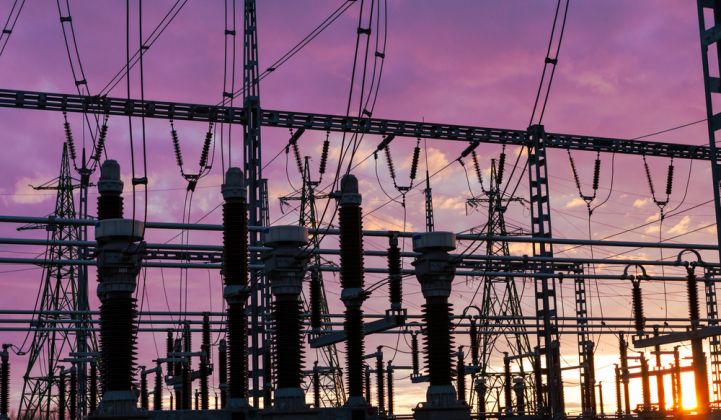In the five years since it announced its intention of bringing “IP-everywhere” capabilities to the smart grid, Cisco has taken two main paths toward that vision.
First, the networking giant’s hardened grid switches and routers have been deployed in utility substations around the world, linking up grid gear from partners like Alstom and Cooper Power Systems. Second, its partnership with smart meter vendor Itron has begun to push Cisco’s IPv6 wireless mesh capabilities out to the endpoints of the grid as well.
But between substations and smart meters lies a whole world of distribution grid devices that Cisco has been slower to target. That may be about to change, however. On Tuesday, Cisco launched a new router, the IR 500, aimed squarely at connecting distribution automation (DA) sensors and controls, and carrying the multitude of protocols they use, via its IP-based networks.
At the same time, Cisco plans to demonstrate how some select partners have embedded this functionality in their own devices to connect to the wireless mesh networks Cisco has deployed at a small but growing number of utilities, starting with showcase customer BC Hydro.
“We’ve got a lot of progress there with Itron and AMI deployments, and now we’re moving more into DA,” Felix Davis, who leads product management for Cisco’s Field Area Network (FAN) solutions, told me in an interview. In October, BC Hydro started switching a test group of its smart meters from Itron’s RF mesh to the wireless network supported by Cisco’s grid routers, and it plans to have all 1.9 million meters running on Cisco’s technology this year.
It’s taken a couple of years to get this flagship Cisco IPv6 mesh network up and running. But as it lights up Itron’s smart meters, it can also start connecting to other distribution grid devices, Davis explained. One of the first, he said, will be a grid sensor called LineWatch, built by QinetiQ, a U.K.-based defense technology company better known for its work on fighter planes, unmanned military robots and military cybersecurity projects than for smart grid. QinetiQ, like Itron, has embedded Cisco’s technology in its grid hardware, and will be demonstrating at the DistribuTECH conference this month in San Antonio, he said.
The IR 500 could dramatically expand Cisco’s list of potential mesh-able partners, however, by providing a gateway to connect DA devices to its IPv6 networks. Right now, Cisco is testing the router with BC Hydro, which has a fully deployed network, and National Grid, which got started on a Worcester, Mass. pilot last year.
Cisco hasn’t announced any device vendors using the IR 500 yet, but it does have a long list of partners that could find it useful. For example, last year Itron, Cisco and Alstom were demonstrating how their combined technologies could help manage edge-of-grid challenges. These could include balancing the up-and-down generation profiles of rooftop solar PV with smart inverters or energy storage systems, or coordinating smart meter and grid sensor readings into the capacitor bank controllers, voltage regulators, and other devices that manage feeder line voltages.
Davis noted that Cisco is “starting now to transport other protocols on the mesh,” to allow legacy devices to interact with grid control platforms without conversion into different forms. For example, Cisco can prioritize the DNP-3 data coming from grid sensors for faster and more direct transport across its mesh, while directing the everyday meter data, carried via the ANSI C12.22 protocol, for its slower fifteen-minute or hourly collection, he said.
Cisco and Itron are now deploying with Duke Energy, Los Angeles Department of Water and Power, Hong Kong’s China Light & Power, Fortis BC and First Energy (PDF), Davis added. The Duke Energy work, which involves about 235,000 meters in North Carolina and South Carolina, will be an interesting one to watch, given that Duke is pushing for a more unified grid network topology that includes distributed intelligence functionality -- something that requires a lot of clever integration of many different technologies and communications protocols.
Cisco isn’t limited to linking DA devices via its IPv6 wireless mesh, however. While the mesh network can send data in seconds via meters and repeater devices in “hops” from one to another and back to collection points, “if you need sub-second deterministic latencies,” which are a must for many grid-control functions, “you need something else,” Davis said.
To get there, Cisco can connect IR 500 devices via alternative communications, he said. Those include private WiMAX networks, which it is testing along with its mesh for National Grid, or powerline carrier (PLC) technologies such as the recently ratified IEEE 1901.2 standard, which Cisco has been testing out to link up smart meters for an undisclosed European utility, he said.
To help connect these field devices and networks, Cisco has revamped its CGR 1000 series router to run the same IOS software that’s behind the rest of its networking gear, he said. That, in turn, can lead to a variety of wide-area network (WAN) choices to connect with utility control rooms and back-office systems, from public cellular used to “backhaul” much of the country’s smart meter mesh network data, to utility-owned fiber, WiMAX or licensed spectrum systems, he said.
“They all have different communications technologies, but the way to lower the TCO [total cost of ownership] for the utility is to have a unified architecture,” he said. This, of course, is the vision behind all of Cisco’s grand grid networking ambitions.



